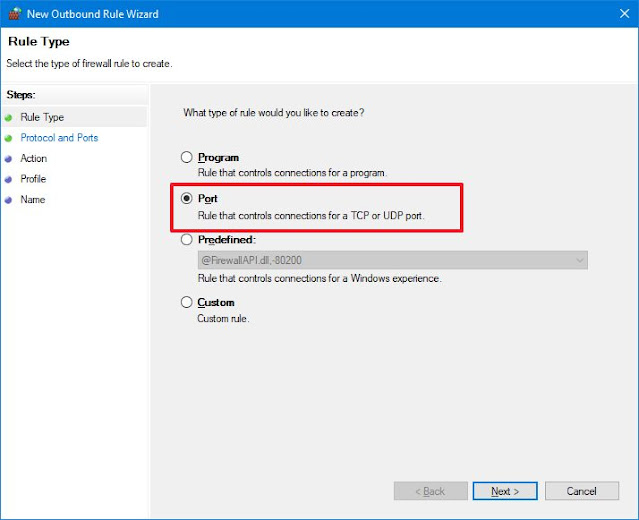On Windows 10, the built-in firewall (also known as “Microsoft Defender Firewall”) is a powerful feature designed to protect your device and data from various external threats. intrusion attempts as well as threats from within. to go out.
Basically, the firewall acts as a gatekeeper and blocks all unnecessary network ports, and every time an application or service tries to communicate outside of your device, it checks to see if there is a regulation. does a particular rule in the database to allow or deny network access. If it can't find the rule, you'll see a prompt to identify and grant or deny permissions.
Sometimes well-known applications (for example, SQL Server and QuickBooks) won't work properly because they are being blocked by Microsoft Defender Firewall. When this happens, you need to create a rule to allow them to manually access the network.
In this tutorial, you will learn the steps to opening a port that allows apps to communicate outside of the network using the built-in firewall on Windows 10.
Open firewall port on Windows 10
If you’re using the Microsoft Defender Firewall, and an app requires one or more ports open in order to operate, use these steps:
Important: Before proceeding, check the app support documentation to know the ports and protocol type you need to open. Also, you can quickly confirm if you need to open a port by temporarily disabling the firewall, and if the app works with the firewall disabled, then it indicates you need to create a new rule.
1. Press Windows Key + I. Open Update & Security
+ I. Open Update & Security
2. Open Windows Security. Click on Firewall & network protection.
3. Click the Advanced settings option.
4. Select Inbound Rules from the left navigation pane. Under the Actions section, in the right pane, click the New Rule option.
5. Select the Port option. Click the Next button.
6. Select the appropriate protocol (TCP or UDP) depending on the application. (Usually, the option is TCP.). In the Specific local ports field, type the port number.
Quick note: If the app requires multiple ports open, you can type as many as you need as long as you separate each one with a comma (4500,4600,5000). In the case that you need to specify a port range, then you can use a hyphen (-). For example, 3000-3100.
7. Click the Next button. Select the Allow the connection option. (Using the same step, note that you can also block connection.)
8. Click the Next button. Select the network type to apply the rule. (Usually, you want to leave this option with the default selections.)
9. Click the Next button. Type a descriptive name for the rule. For example, My Inbound Rule for QuickBooks.
10. Click the Finish button.
After you complete the steps, inbound connections will be allowed for the app through the port you open in the firewall.
Open outgoing port in Microsoft Defender Firewall
In the case that the app needs a specific outbound port, you can use the same instructions, but instead of selecting Inbound Rules on step No. 4, you would choose the Outbound Rules options. Here’s how:
1. Press Windows Key + I. Open Update & Security
+ I. Open Update & Security
2. Open Windows Security. Click on Firewall & network protection.
3. Click the Advanced settings option.
4. Select Outbound Rules from the left navigation pane. Under the Actions section, in the right pane, click the New Rule option.
5. Select the Port option. Click the Next button.
6. Select the appropriate protocol (TCP or UDP) depending on the application. In the Specific local ports field, type the port number. Click the Next button.
7. Select the Allow the connection option. Click the Next button.
8. Select the network type to apply the new rule. Click the Next button.
9. Type a descriptive name for the rule.
10. Click the Finish button.
Once you complete the steps, outbound connections will be allowed for your application through the port you open in the firewall.
Close firewall port on Windows 10
1. Press Windows Key + I. Open Update & Security
+ I. Open Update & Security
2. Open Windows Security. Click on Firewall & network protection.
3. Click the Advanced settings option.
4. Select Inbound Rules or Outbound Rules from the left navigation pane depending where you open the firewall port.
5. Select the rule you want.
6. Under the Actions section, click the Disable Rule to close the port while keeping the rule. Or click the Delete rule to close the port and remote the rule from the firewall.
After you complete the steps, the app or service will no longer have access to the network or internet.
Video:
























No comments:
Post a Comment